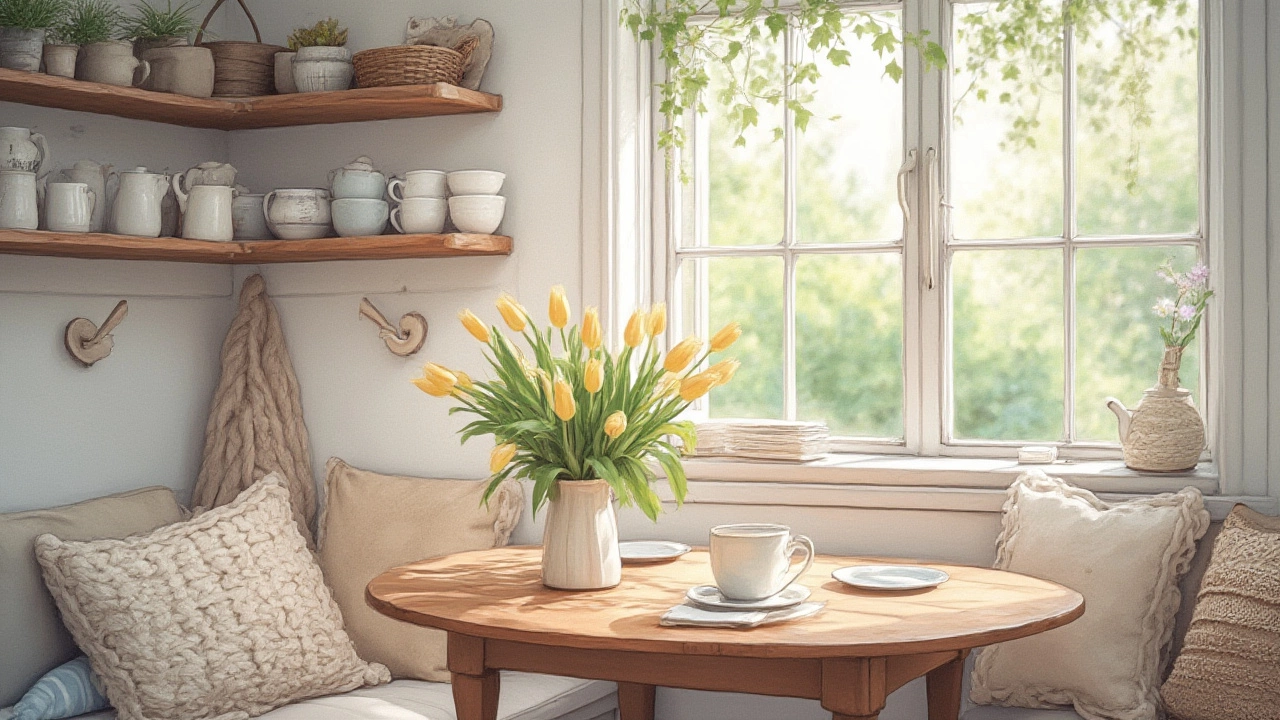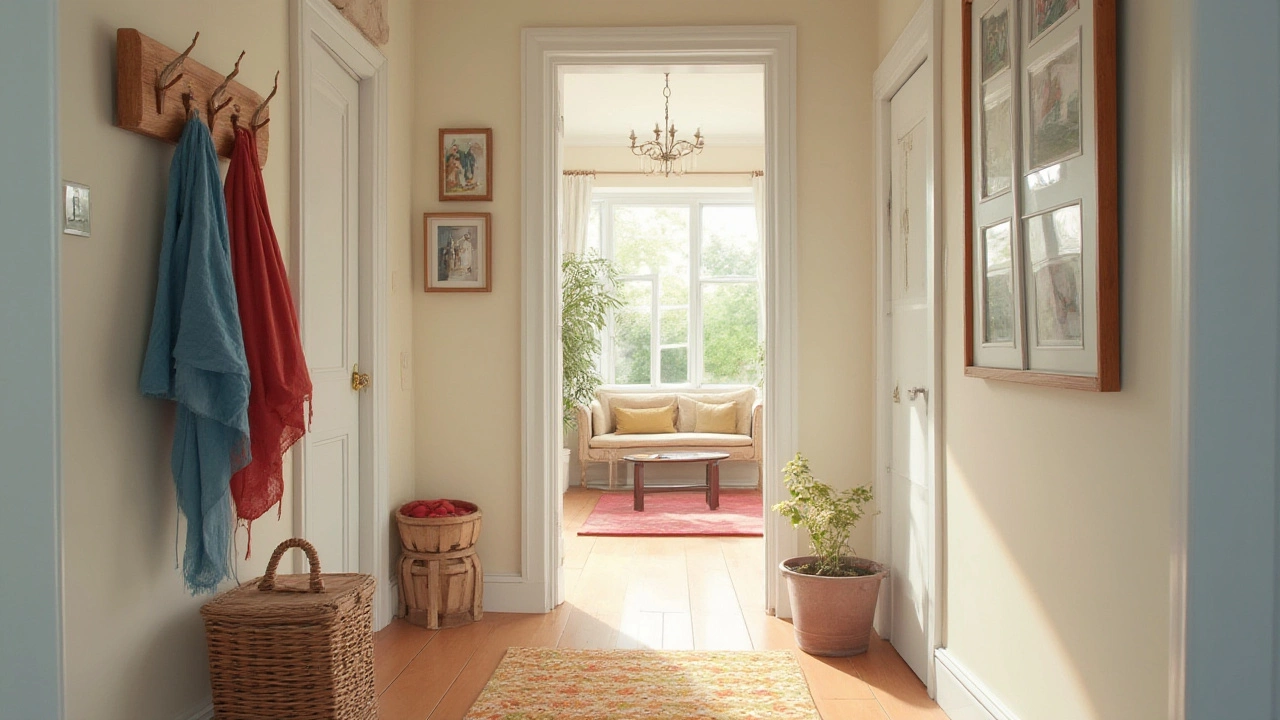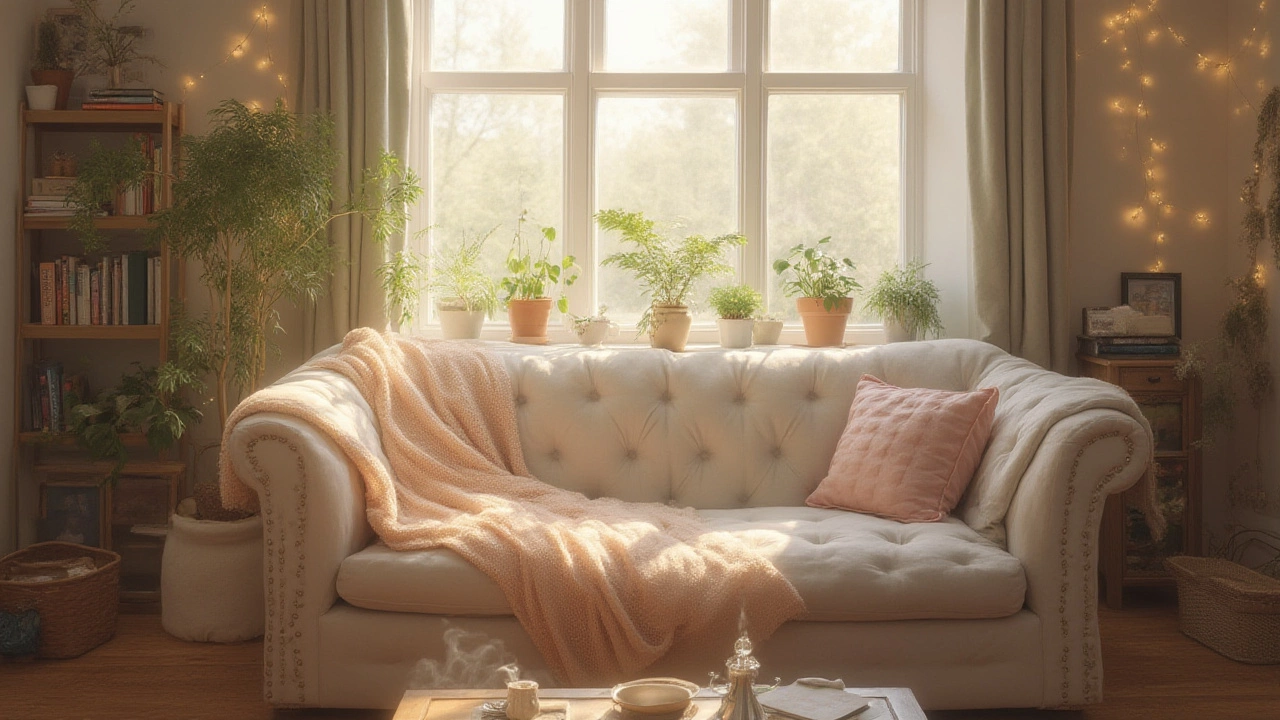Do you ever walk into a house and instantly feel hugged by the space itself? The couch looks soft, there’s a gentle lamp glow, but there’s no avalanche of stuff teetering off tables and shelves. The place feels warm and inviting, but not jammed full of knick-knacks. It’s not magic—it’s mindful design. There’s a real knack to making a home feel cozy without it morphing into a museum of souvenirs or a storage unit for things you don’t actually use. Turns out, South Africans are catching on. According to a 2024 survey by House & Leisure, 68% of us crave coziness at home, but nearly half admit to feeling overwhelmed by the stuff that comes with it. The secret? Comfort isn’t about quantity. It’s about what you choose to keep, how you use it, and the feeling your space gives you when you come home at the end of a long day.
Understanding the Difference: Cozy vs. Cluttered
Here’s the real kicker: there’s a thin line between comfort and chaos. Cozy, in its truest form, comes down to what you see, feel, and even smell. It’s the weighted blanket you pull over your legs during a Durban winter. It’s the lamp that gives off soft light, making your room feel safe and snug after sunset. But what about that pile of magazines from months ago, or the coffee mugs you keep “just in case”? That’s where clutter creeps in—and it isn’t always obvious. Clutter can sneak up as sentimental objects, abandoned crafts, or things you mean to fix but never get around to. You aren’t alone. The Human Sciences Research Council in Pretoria found in a 2023 lifestyle study that 54% of South African homeowners keep unwanted items out of guilt.
But all is not lost. A cozy home isn’t about stripping away all personality. It’s about understanding what adds value to your day-to-day. Decluttering is an ongoing process, not a one-off hack. Psychologists say that our brains actually tire when our eyes take in too many things at once. Visual overload—too many colours, textures, and trinkets—can leave you feeling jumpy instead of rested. So, it’s not selfish to curate. It’s smart. The most loving spaces allow for a deep breath, not a frantic sweep before guests arrive.
Try this quick trick: pick one room and stand in the doorway. Ask yourself what draws your eye first. Is it a clear spot that says "come relax" or a pile-up of stuff (even if it’s cute)? A cozy space invites you in without making you work hard to enjoy it. Let’s look beyond the basic “throw away your things” mantra and unpack what truly works—because your home should be your retreat, not another chore on your to-do list.

Smart Storage and Thoughtful Decor Choices
If you want a cozy home, clever storage is your new best friend. Gone are the days when “decorating” meant piling on more. Instead, think smarter—what’s out should be beautiful or useful, not just “because.” Multi-purpose furniture is a lifesaver in this game, especially for apartments and small houses. Consider a coffee table with drawers underneath for remote controls, or ottomans that open up to store extra throws. People in Durban are big fans of baskets; a woven basket by the couch isn’t just a style move, it’s a sneaky way to stow board games, pet toys, or winter slippers.
Your home decor doesn’t need to be a catalog of trends. Choose a colour palette that feels restful—a 2024 trend report from Plascon found that neutral walls with a few bold accents are linked to reducing daily stress. For example, creamy whites, soft greys, and olive green are easy on the eyes, while mustard yellow cushions or a burnt-orange vase add energy without upping the visual clutter. When it comes to textiles, don’t overdo it. Two or three throw pillows and one blanket per seat is more than enough for a lounging nook. Too many, and you’re spending more time rearranging than relaxing. If you’re in a humid coastal city like ours, fabrics like cotton, linen, or blends feel cool—not stuffy—year-round.
Pare down your surfaces. No need for seven scented candles and stacks of old books. Instead, display only what you love or use, like a single framed photo, a candle you actually burn, or a coffee table book that invites paging through. Kitchens can be cozy, too: a simple fruit bowl or a fresh herb planter on the counter makes the room feel alive. Busy counters just amplify the chaos. As for bedrooms, a good rule of thumb is that everything should have a “home”—if you don’t know where an item belongs, it probably shouldn’t be there.
Lighting changes everything. Skip the blistering overhead light at night. Durban evenings call for a few low lamps, a string of fairy lights, or even candles. If you don’t like open flames, LED candles are surprisingly convincing and safe. Set them in corners, not in the busy middle of the room, to soften everything around you.
Let’s not forget about scent. A cozy space smells inviting. Essential oil diffusers or a bowl of citrus peels do the trick without taking up much room. Plus, this is Durban—open your windows in the morning for that ocean breeze (assuming the monkeys aren’t making mischief), and your whole home feels fresher.
Here’s a quick data snapshot to back up these tips:
| Home Feature | Percentage of Durban Homeowners Choosing This (2024) |
|---|---|
| Multi-purpose Furniture | 62% |
| Soft, Neutral Colour Schemes | 71% |
| Minimal Surface Decor | 59% |
| Layered Lighting (lamps, candles) | 77% |
| Baskets for Storage | 66% |

Habits for Keeping Cozy Without Clutter
Creating a welcoming, cozy home without falling into clutter isn’t about a weekend makeover—it’s about little rituals and day-to-day choices. It starts with being mindful when you bring new things in. Before you buy that seventh coffee mug, ask yourself if you truly need it or if it’s just cute in the moment. Durban’s markets are full of tempting finds, but sometimes less really is more. Only bring decor home that fits your style and actually has a place. It’s the “in-one-out-one” rule: for every new item, donate or recycle something else.
Don’t underestimate the power of a regular reset. Pick one evening a week—I do this on Sunday afternoons—where you spend just 10 minutes putting everything back where it belongs. It’s not a big clean, just a regrouping. Return magazines to their rack, hang up jackets, empty your catch-all bowl of keys and coins. You’ll be amazed how much calmer you feel walking in Monday morning.
In South African homes, we often blend patio living with indoor comfort. If you already have a stash of cozy blankets for chilly braais, store them in a lidded basket or on a ladder rack at the edge of your lounge. It looks intentional, not messy. Pets? Keep a cute basket for toys—cleaner floors in minutes. Those with kids, get creative: build toy storage under bench seats or inside coffee tables.
Stay on top of "clutter hotspots"—the spots where stuff naturally piles up. For most people, it’s the entryway, bedroom chair, kitchen counter, or the infamous “dump zone” by the door. Add a tray or basket for sunglasses and mail so it looks neat, even if you toss things in after a long day. If laundry tends to congregate, invest in hampers for each bedroom—trust me, the 2024 home trend surveys say this single move shrank scattered washing by 38% in local households.
Embrace the seasonal switch. Every few months—maybe as winter melts into spring, or before the madness of year-end holidays—take stock of things creeping in. Pack away heavy winter throws when Durban’s heat returns, and rotate in lighter covers. It keeps the space breathing, not stagnant.
- Be picky about sentimental keepsakes. Don’t keep every souvenir—display one favorite, store the rest, or take a photo of sentimental items before letting them go.
- If you receive gifts you don’t need or love, it’s kind to pass them on. There’s no good energy in guilt-clinging to things.
- Use vertical space. Shelves keep books and decor off surfaces, while hooks behind doors stow bags, hats, and scarves neatly.
- Say yes to plants—but only the ones you can realistically care for. A single big ficus or two small succulents can warm up a room without turning your home into a forest.
- Let nature inside. Natural sunlight, sea breezes, or even rain sounds liven up a home without adding anything "extra."
When all is said and done, it’s about how you feel living there. Cosy doesn’t mean maximal—just intentional. Every time you walk through the front door after a wild Durban thunderstorm or a long day wrestling city traffic, your home should say: slow down, you’re right where you belong.
